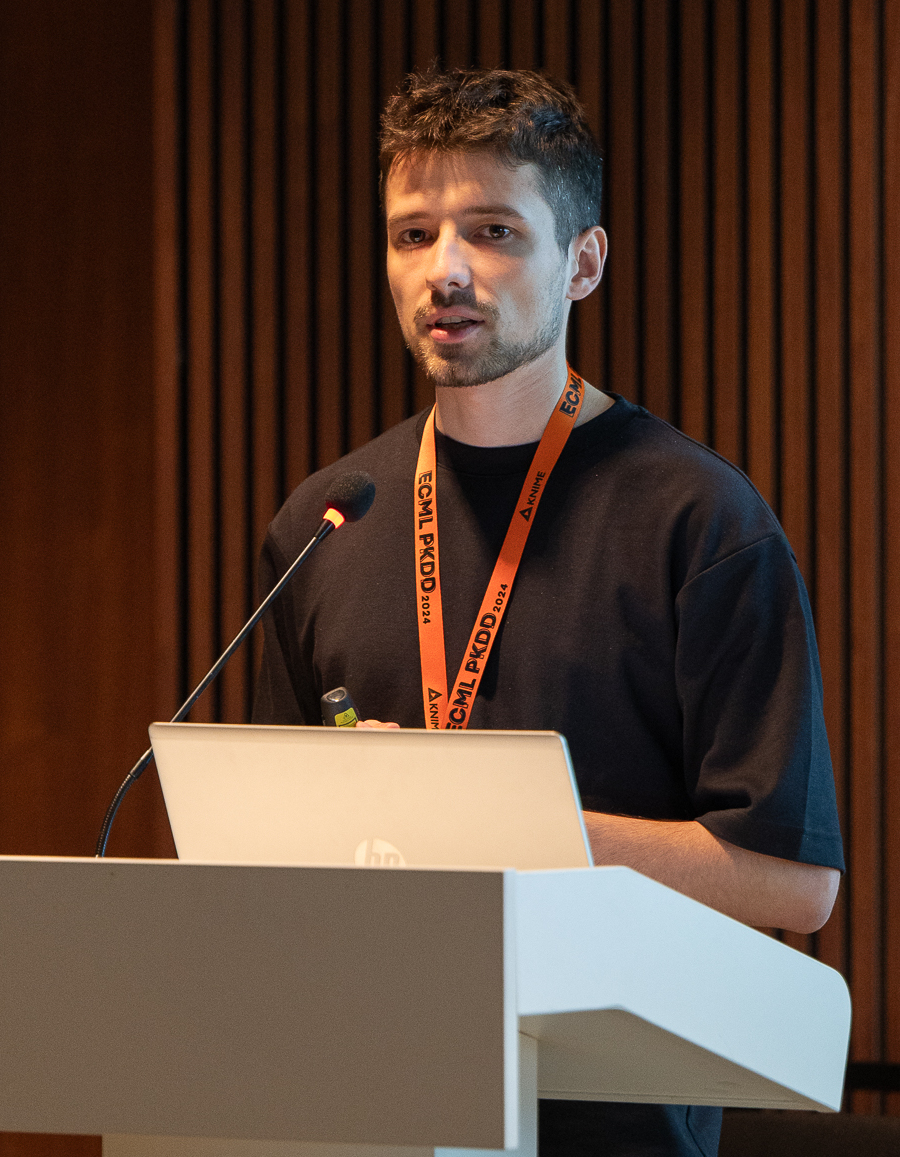Hubert Baniecki
University of Warsaw • Centre for Credible AI, Warsaw University of Technology

I am a 4th (final) year PhD student in Computer Science at the University of Warsaw, advised by Przemyslaw Biecek. During my PhD, I have been a visiting researcher at LMU Munich, hosted by Bernd Bischl (2024) and Eyke Hüllermeier (2025). Previously, I earned a Master’s degree in Data Science from Warsaw University of Technology.
My research focuses on machine learning interpretability and explainable AI:
- interpreting multimodal, vision–language models like CLIP (NeurIPS 2025),
- statistical foundations of explainable machine learning (ICLR 2025 Spotlight),
- open-source software (JMLR 2021) and benchmarks (NeurIPS 2024) in this domain,
- applications of interpretability in medicine (WACV 2025) and beyond (PNAS 2024).
I actively contribute to the academic community by serving as a reviewer for conferences like NeurIPS, ECML, ICLR, with their workshops on interpretability/xAI, and journals like the Journal of Machine Learning Research, Machine Learning, Nature Communications.
I am on the job market for positions starting in 2026/2027; feel free to contact me if there is an opportunity that fits.
recent news [previous]
| 2025 Nov | I stay in Italy until December for a 1-month research visit at the University of Pisa hosted by Riccardo Guidotti. |
|---|---|
| 2025 Sep |
A paper |
| 2025 Sep |
A paper |
| 2025 May | Foundation for Polish Science awarded me the START scholarship for young scientists. |
| 2025 May |
A paper |
| 2025 Mar | I stay in Germany until April for a 1-month research visit at LMU Munich hosted by Eyke Hüllermeier. |
| 2025 Jan |
A paper |
| 2024 Nov |
A paper |
selected publications [full list]
-
Explaining similarity in vision-language encoders with weighted Banzhaf interactions
Advances in Neural Information Processing Systems (NeurIPS) , 2025We introduce faithful interaction explanations of CLIP and SigLIP models (FIxLIP), offering a unique, game-theoretic perspective on interpreting image–text similarity predictions. -
Interpreting CLIP with hierarchical sparse autoencoders
International Conference on Machine Learning (ICML) , 2025We introduce the Matryoshka sparse autoencoder (MSAE) that establishes a state-of-the-art Pareto frontier between reconstruction quality and sparsity for interpreting CLIP models. -
ICLR
Spotlight Efficient and accurate explanation estimation with distribution compressionInternational Conference on Learning Representations (ICLR) , 2025 (Spotlight)We introduce compress then explain (CTE) as a new paradigm for sample-efficient estimation of post-hoc explanations, including feature attributions, importance, and effects. -
WACV
Oral Aggregated attributions for explanatory analysis of 3D segmentation modelsIEEE/CVF Winter Conference on Applications of Computer Vision (WACV) , 2025 (Oral)We discover knowledge acquired by the TotalSegmentator foundation model trained to segment all anatomical structures in computed tomography medical images. -
shapiq: Shapley interactions for machine learning
Advances in Neural Information Processing Systems (NeurIPS) , 2024We develop {shapiq}, an open-source Python package that implements several algorithms and benchmarks for efficiently approximating game-theoretic attribution and interaction indices. -
Increasing phosphorus loss despite widespread concentration decline in US rivers
Proceedings of the National Academy of Sciences , 2024We reveal a paradox in US rivers with deep learning: phosphorus concentration is down over the last 40 years, particularly in urban areas, but total phosphorus loss is up due to climate change.